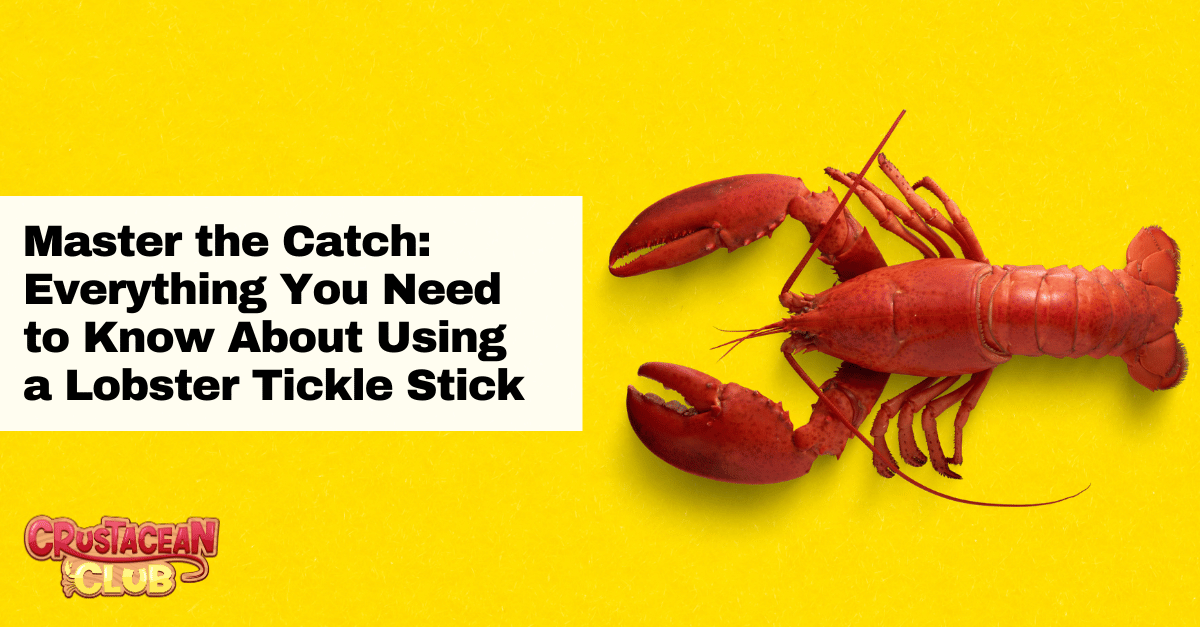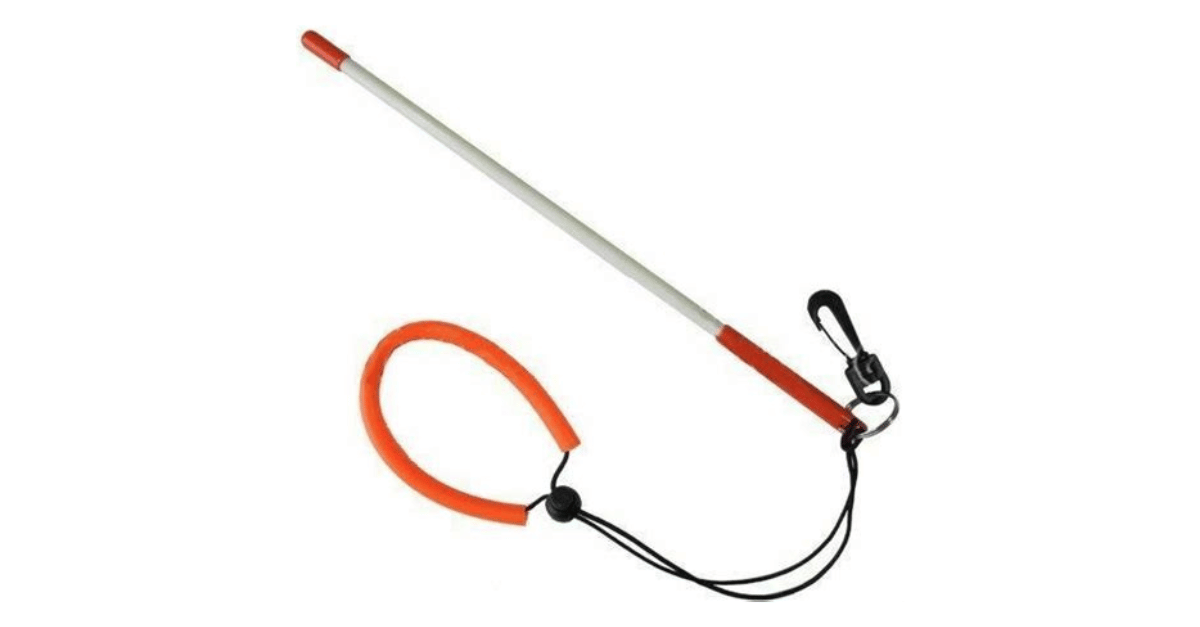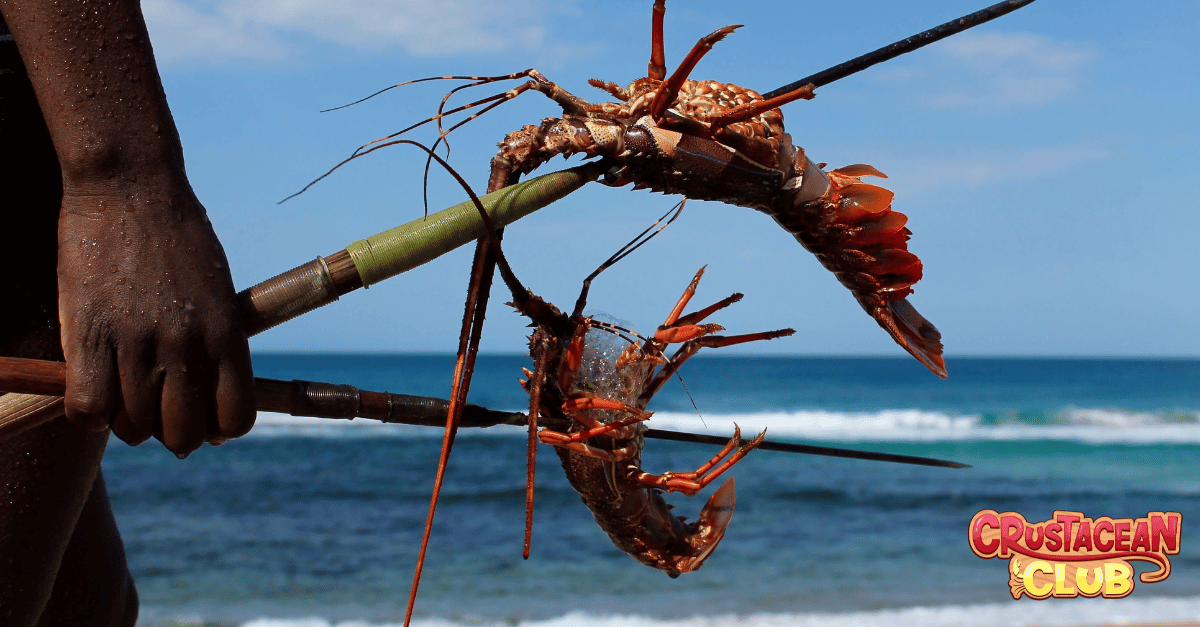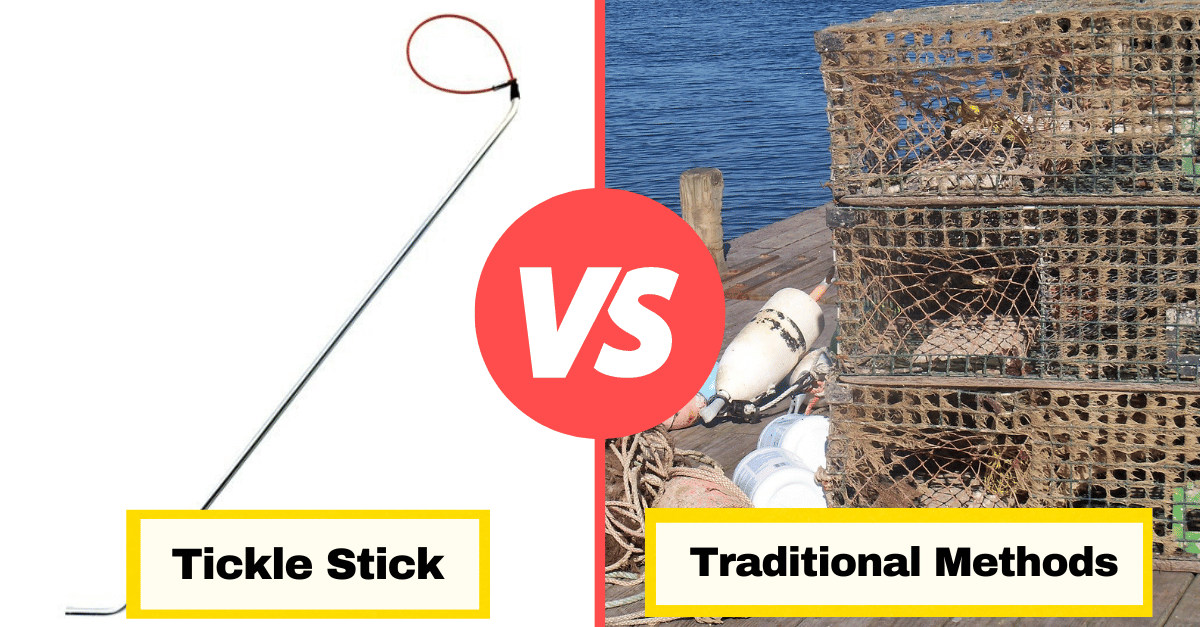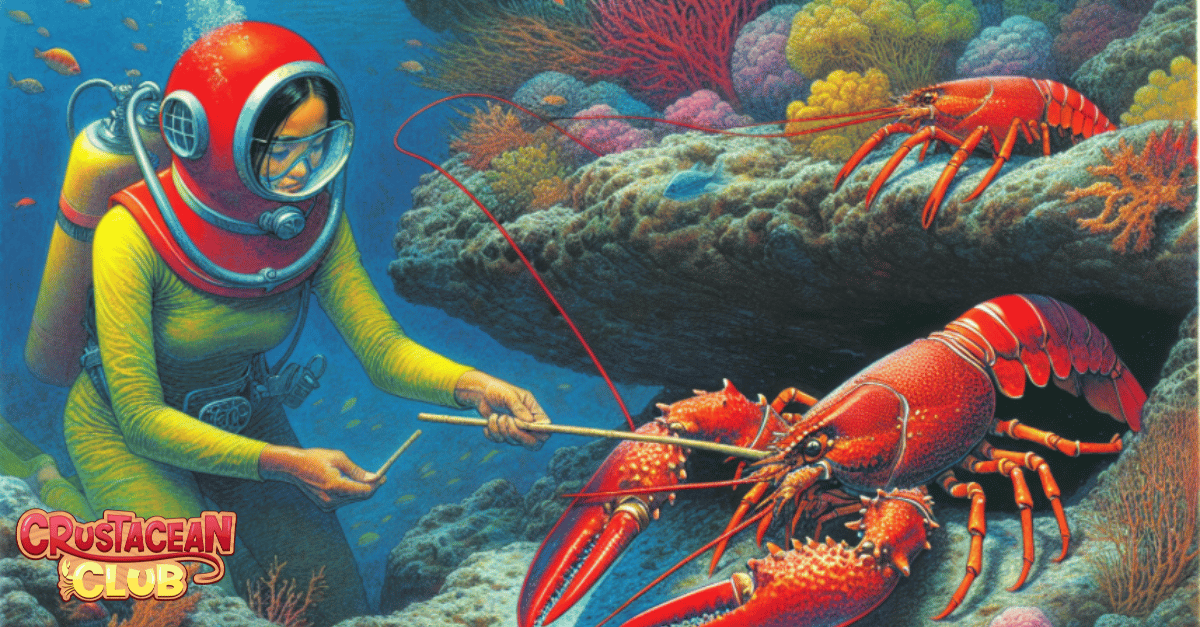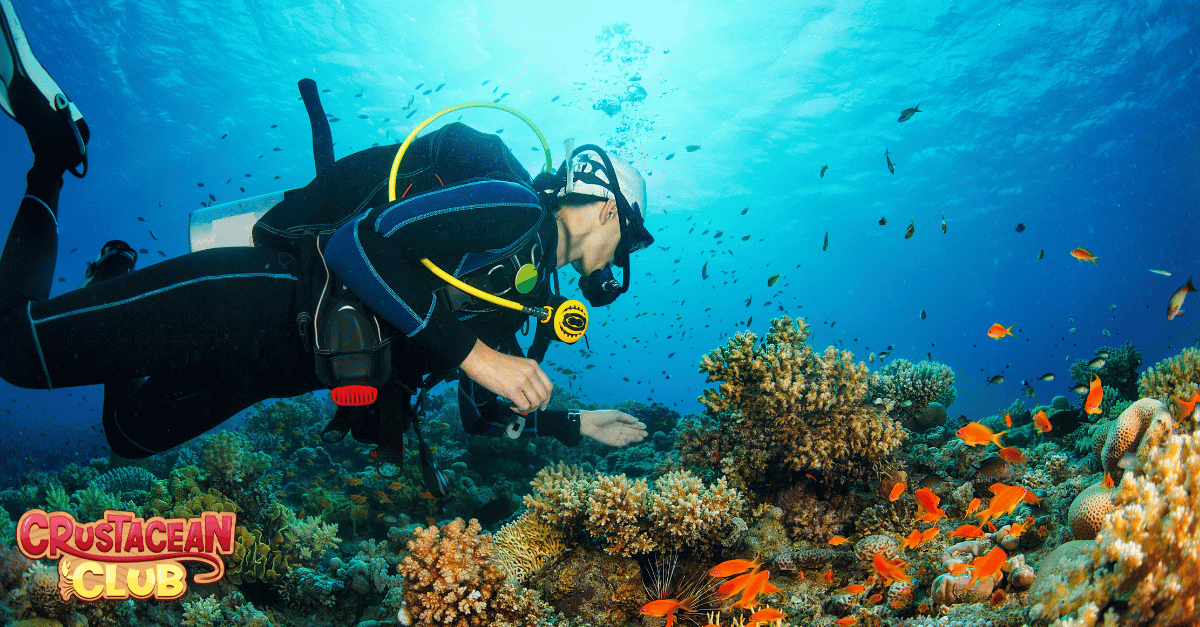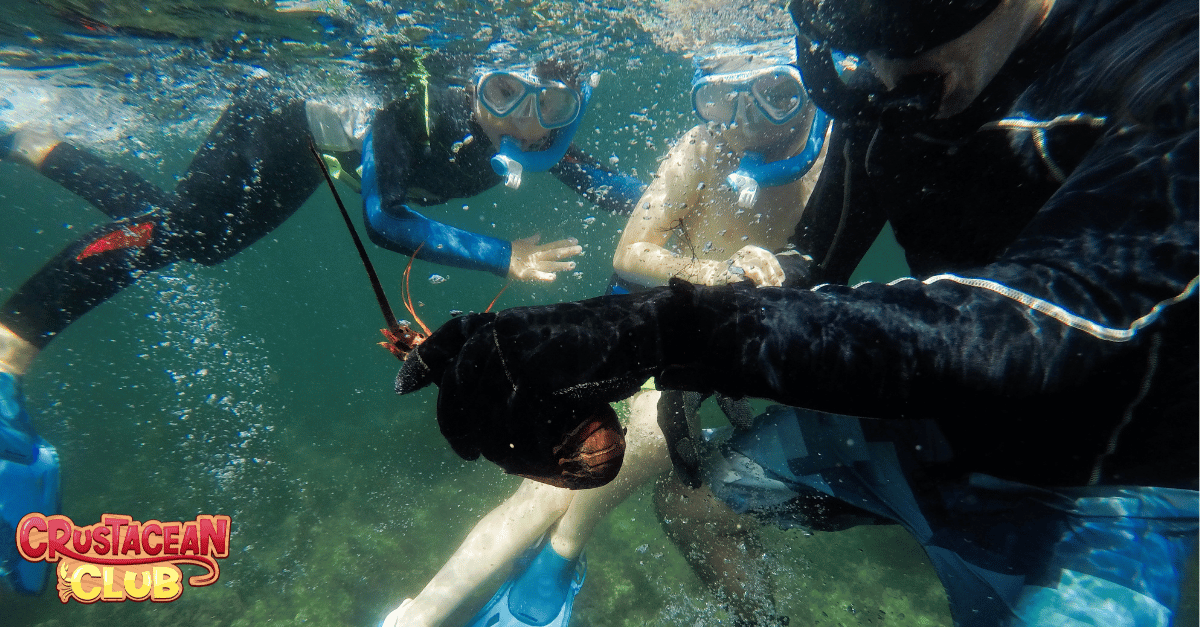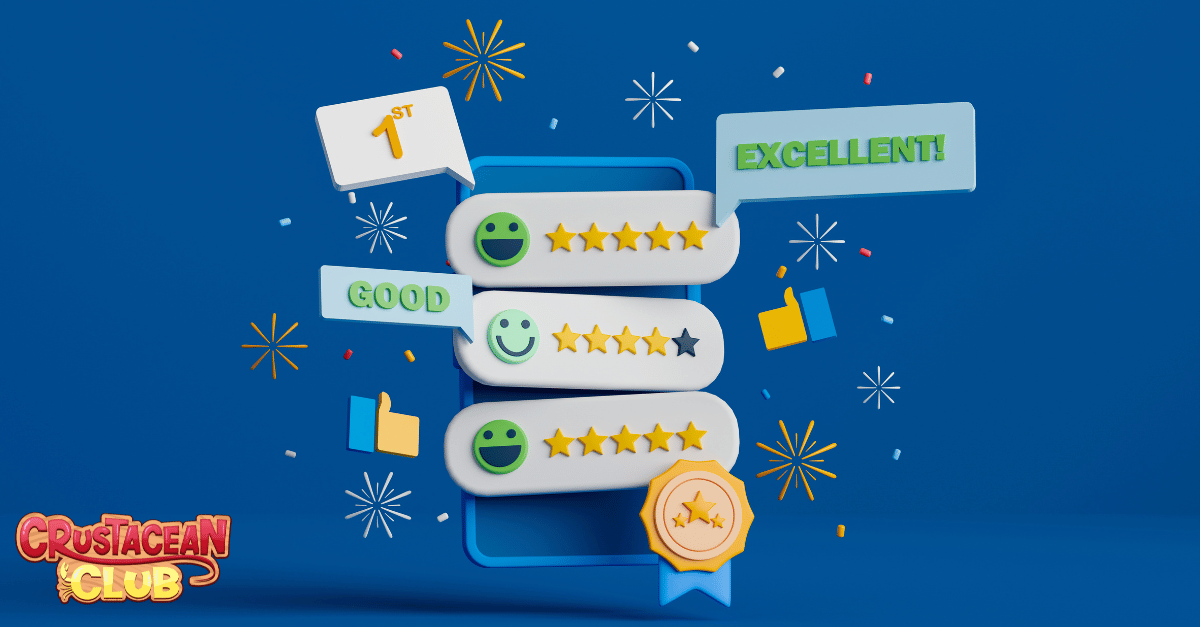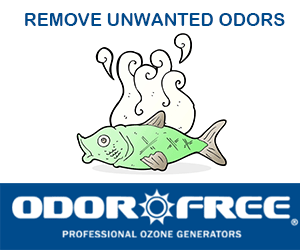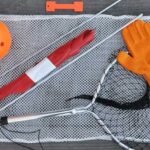If you’re on the hunt for lobsters, the right lobster tickle stick can make all the difference. This no-nonsense guide will show you how to effectively use a lobster tickle stick to draw lobsters out while preserving their natural habitat. From selection criteria to practical techniques for every skill level, you’ll gain the knowledge needed to improve your catch using this simple yet powerful tool.
Curious about alternatives to the tickle stick? Check out the Crustacean Club site for additional expert guides on lobster hunting!
Key Takeaways
- The tickle stick is a sustainable and gentle tool for lobster hunting that’s designed to coax lobsters out of hiding without harming them.
- Mastering the use of a tickle stick requires patience, strategy, and knowledge of the best seasons for lobster hunting to maximize catches.
- Choosing the right tickle stick entails considering material, length, and price for effectiveness and a comfortable hunting experience, with customer reviews providing valuable insights.
We love hearing from our readers and subscribers, so please feel free to reach out and contact us today!
Understanding the Tickle Stick
Imagine a tool so slender and precise, it can navigate the labyrinth of the ocean floor with the ease of a seasoned explorer. The tickle stick is the lobster hunter’s wand, designed long and thin to reach into the crannies where lobsters love to lurk. The tickle stick gently persuades these armored delicacies out of their hideaways and into your catch bag, keeping them unscathed in the process.
Unlike the brute force of a hook or the tangles of a net, the tickle stick is a testament to the hunter’s finesse, making it a beloved tool in the sustainable pursuit of these ocean treasures. Furthermore, being a successful hunter requires precise knowledge of one’s prey. Learn more about the lobster on our site today!
It’s always important to be safe on your lobstering expeditions, so be sure to check out our Expert Guide to Lobster Season in Florida: Tips and Regulations for a Succulent Catch!
The Basics of Tickle Sticks
Crafted from the sturdy resilience of materials like corrosion-resistant acrylic, aluminum, or fiberglass, tickle sticks are the embodiment of durability and precision. The ingenuity of these sticks is evident in their varying lengths, designed to suit the diverse challenges the sea presents.
Their Parallel Composite Construction culminates in a flat tip, a feature that amplifies the hunter’s tactile connection to the environment and ensures rigidity where it counts.
Why Lobster Hunters Use Tickle Sticks
The ocean’s nooks and crannies are no match for the tickle stick, which lobster hunters wield to coax their quarry out without inflicting harm. This gentle provocation respects the lobster’s well-being, allowing for a catch that’s as ethical as it is rewarding.
The tickle stick’s design favors reaching into confined spaces, making it a superior choice where traditional tools falter. Those who choose the tickle stick often report less damage to their catch, reflecting a humane approach that’s well-suited for both the seasoned and the compassionate hunter.
Comparing Tickle Sticks to Traditional Methods
A tickle stick isn’t just a tool; it’s a choice—a choice that speaks to the hunter’s ethos and the demands of the diving environment. Where grabbing or trapping might be the go-to in deeper, murkier waters, the tickle stick shines in the shallows with its less intrusive touch.
Whether to pair it with a net or a snare is often a matter of personal preference and experience. But many a diver will attest to its efficacy in reef diving, where its persuasive power can lure lobsters out from their limestone labyrinths.
Crafting Your Strategy: Techniques for Success
Armed with a tickle stick, the underwater hunter must become a strategist, a patient observer who knows when to act and when to wait. It’s not just about wielding the stick but mastering the movements that make it an extension of your own determination. Perfecting this technique demands patience, as coaxing a lobster from its daytime hideaway is an art as much as a science.
Practice across various seabed terrains helps you skillfully adapt your approach to any situation the ocean floor may present.
Locating the Lobster’s Lair
Securing a bountiful catch requires you to first uncover the lobster’s lair, playing detective. With a tickle stick, you can mark the spot where your prey hides by wedging the tool into the surrounding rock, ensuring that when you resurface for air, you can dive back down to the exact location. This little trick is a game-changer, turning the vast ocean floor into a map dotted with treasure marks only you can see.
Every spot will have a different roadmap. Thus, it’s important to learn the layout and features of where your lobster hunting expedition is taking place. Learn more about common lobstering locations in Florida by visiting the Crustacean Club’s Hot Spot Locations list!
The Art of Coaxing with a Tickle Stick
The true artistry of lobster hunting with a tickle stick lies in the gentle persuasion, the delicate dance that lures the lobster from safety without a scare. As the daylight filters down, lobsters can be enticed with a tickle stick’s touch, seduced into the open where they are less wary.
Coupling the stick with a net, the hunter executes a graceful ballet, guiding the lobster into the embrace of the net and securing the catch close to the body, avoiding any hole that could let the lobster escape. This technique is often described as an art, requiring the ability to write a story of success with each catch.
Timing and Precision
When it comes to lobster hunting, the seasons hold sway over the tickle stick’s success. Springtime, when lobsters are on the move, and the early summer months of inshore migration, offer prime opportunities to put your tickle stick to test.
The tickle stick truly shines during the molting season of May and June, when the lobsters’ defenses are down. Mastering this timing, alongside the precision of your movements, is a craft honed through persistent practice.
Maximizing Your Catch: Quantity and Efficiency
Once you’ve mastered the delicate maneuvering of the tickle stick, it’s time to focus on maximizing your catch—balancing the sheer number of lobsters with the efficiency of your technique. Adapting to the lobsters’ varied responses to the tickle stick’s prod requires hunting at different times and tweaking your approach.
Understanding the terrain and seeking out the ideal habitats will further streamline your hunt, leading you to the dens where lobsters congregate. In addition to the knowledge specific to the tickle stick approach, lobstering is a holistic practice that recycles much of its information. Thus, be sure to learn about the Top 10 Tips for Lobstering to improve your overall skill and knowledge!
Balancing Quantity and Sustainability
But the bounty of the sea is not endless, and the seasoned hunter knows that today’s catch should not come at tomorrow’s expense. In the sustainable spirit of Maine’s lobster industry, conservation laws such as size limits and the protection of egg-bearing females ensure that the lobster population remains healthy. By adhering to these practices, hunters can enjoy a plentiful catch while preserving the ocean’s balance and helping to decrease quantity of overfishing.
Streamlining Your Approach
Efficiency is the mark of an expert, and streamlining your lobster hunting approach is key to success. Training with your tickle stick on land or in a pool can refine your technique before you even hit the open water. The seasoned hunter travels light, carrying only the essentials to prevent underwater snags and to move with ease.
Remember, correctly storing your gear is vital to save and maintain the snare’s shape, especially for moments when precision counts.
Equipment Care to Prolong Use
Taking care of your tickle stick also plays a crucial role in your lobster hunting success. Attention to detail, like replacing weak components and protecting metal connectors from rust, can vastly extend the life of your stick. A simple addition like rubber tubing to the end can improve grip, especially when you’re diving with gloves. Remember, a well-maintained tool is a reliable partner in the depths of the ocean.
Once you’ve mastered the art of the tickle stick and caught your first lobster, be sure to access our library of recipes to learn new ways to create a sumptuous lobster meal!
Choose Wisely: Selecting the Right Tickle Stick
When it comes time to choose your tickle stick, it’s not a decision to be taken lightly. Choosing the right stick can be the difference between an empty and a full bag. Consider factors like:
- length
- durability
- material
- any attached components that could give you an edge
Some tickle sticks are handmade, offering unique advantages, and manufacturers like 13 Fishing provide warranties that speak to their quality.
Being informed about your gear is essential, this includes considering Proposition 65 warnings that alert you to the presence of harmful chemicals.
Material Matters
The material of your tickle stick is a major determinant of its performance under water. Durable PVC pipe, for instance, is a favorite among hunters for its resilience, while rubber-coated steel cable offers an economical yet sturdy option.
High-visibility tips and custom features like a comfortable handle can elevate your hunting experience, ensuring you wield a tool that’s both effective and enjoyable to use.
Length and Flexibility
The length of your tickle stick goes beyond reach, it provides the leverage needed to coax lobsters out from their deepest refuges. A longer stick can give you the advantage in hard-to-reach ledges or holes, while an angled tip can add precision to your prodding.
It’s about finding the right balance that suits your hunting style and the environments you’ll be exploring.
Price vs. Quality
While the quality of a tickle stick often correlates with a higher price tag, consider it an investment in your lobster hunting future. Features like an integrated lobster gauge or an ergonomically molded handle can justify a higher cost. But the savvy shopper will look for that sweet spot where affordability meets functionality, ensuring their tickle stick doesn’t break the bank—or under the strain of a hefty lobster.
From Cart to Catch: Purchasing and Order Details
So, you’re ready to translate your tickle stick knowledge into a tangible addition to your lobster hunting arsenal. Transitioning from cart to catch involves:
- Navigating through the vast sea of online shopping
- Sifting through current stock
- Understanding the significance of UPCs for product verification
- Maintaining your retail accounts for a smooth transaction.
Navigating Online Shopping
Diving into the online marketplace requires a sharp eye. Filters can help you navigate through the plethora of tickle stick options, homing in on the features you need. Pay close attention to product descriptions—they’re treasure troves of information that disclose the stick’s material, length, and other key attributes, like whether it comes with a split ring for attaching a lanyard.
Understanding Shipping and Handling
Once your tickle stick is selected, it’s time to get it home. Shipping options range from standard to expedited delivery, with the latter typically incurring additional costs. Handling fees, sometimes hidden in the fine print, can also influence the final price you’ll pay.
It’s wise to factor these into your budget as you prepare for your tickle stick’s voyage to your doorstep, especially if you plan to increase quantity.
Return Policies and Guarantees
What if the tickle stick that arrives doesn’t meet your expectations? Fear not, as most retailers offer a 30-day return window, provided the stick remains in its original condition. Keep your proof of purchase handy and be aware of any restocking fees that might apply.
A one-year warranty is a common safeguard, covering any defects that might slip through the net.
Customer Insights: Reviews and Comments
Crowd wisdom can guide you as you evaluate the merits of various tickle sticks. Customer reviews and comments provide an unvarnished look at how these tools perform in the wild. From the lightness and grip to the stick’s durability, these insights can shape your expectations and help you avoid common pitfalls.
What Others Are Saying
There’s no substitute for the voice of experience, and customers who’ve taken their tickle sticks into the fray have much to share. Praised for their compactness, durability, and visibility, these tools have proven their worth in the hands of those who’ve tested them against the ocean’s challenges.
The Pros and Cons
Like every tool, tickle sticks have their strengths and weaknesses. Enthusiastic reviews often cite their efficacy in drawing lobsters out of hiding, while critiques may point to issues with flexibility or manageability. But even among the concerns, the consensus often leans toward tickle sticks being a valuable asset for the lobster hunter.
How Reviews Can Guide Your Choice
Navigating the sea of customer reviews can lead you to the tickle stick that best suits your hunting style and conditions, all while offering the lowest prices. A thorough review of both positive and critical comments will shine a light on the best features and highlight potential deal-breakers.
Seek out feedback from hunters whose approach to the sport aligns with yours, as their experiences will be the most relevant to you.
Summary
We’ve journeyed through the ins and outs of choosing and utilizing the perfect tickle stick for your lobster hunting adventures. From understanding the humane approach that tickle sticks offer to mastering the art of coaxing lobsters from their hiding spots, and from selecting the right materials to navigating the online shopping seascape, we’ve covered it all. It’s about blending patience with strategy, and sustainability with success. So as you set your sights on the ocean’s bounty, remember that the right tools, paired with knowledge and respect for the deep blue, can make all the difference. Here’s to your next catch—may your tickle stick guide you to a plentiful harvest!
Learn more about us and the wealth of knowledge we have to offer here at Crustacean Club about all things, well, crustacean!
Frequently Asked Questions
What is the primary purpose of a tickle stick in lobster hunting?
The primary purpose of a tickle stick is to coax lobsters out of their hiding spots in a gentle and humane way, allowing for a harm-free catch. Happy lobster hunting!
How do tickle sticks compare to traditional lobster-catching methods?
Tickle sticks are considered to be a more compassionate and non-invasive approach compared to traditional lobster-catching methods such as hooks or nets. They enable divers to gently guide lobsters into catch bags without directly capturing them, making them more effective in some environments.
Can the length of a tickle stick affect my lobster hunting success?
Yes, a longer tickle stick can improve your lobster hunting success by reaching deeper into hiding spots and increasing your chances of luring them out. Happy hunting!
What should I consider when purchasing a tickle stick online?
Consider the material, length, and added features when purchasing a tickle stick online. Read customer reviews, check for shipping fees, and understand the return policies and warranties.
How can I ensure the longevity of my tickle stick?
To keep your tickle stick in good shape for longer, remember to rinse and dry metal connectors to prevent rust, replace worn out parts, and add grip enhancements like rubber tubing to the end of the stick. Enjoy tickling!
Hi! My name is Jessica, and I am the Head of Content for Crustacean Club. If you woul like any changes or if you want to submit a blog, DM me!

